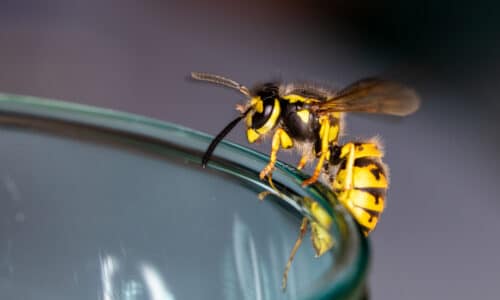What to Do When a Wasp Enters Your Home
A wasp buzzing around indoors can quickly turn a calm afternoon into a stressful situation. These stinging insects are not only aggressive but can also pose a serious health threat—especially to individuals with allergies. Whether you’re dealing with a single intruder or suspect a larger issue, knowing how to safely remove a wasp from your home is essential.
We’ll outline the best practices for indoor wasp removal, how to locate and address nests, and when it’s time to call in professional pest control.
Step 1: Stay Calm and Assess the Situation
First and foremost, don’t panic. Wasps typically won’t sting unless provoked. Keep movement slow and avoid swatting at the insect, which could trigger a defensive reaction. Assess whether it’s a lone wasp or potentially part of a larger infestation.
Step 2: Create an Exit Path
One of the safest, easiest ways to remove a wasp is to guide it outside:
- Open nearby doors and windows to allow it a natural escape route.
- Turn off interior lights and draw curtains, while leaving outside openings bright. Wasps are drawn to light and are more likely to fly toward it.
- Avoid standing in its path and gently use a broom or fan to direct it outside if needed.
Step 3: Trap and Release the Wasp Safely
If the wasp doesn’t leave on its own:
- Wait for it to settle on a surface.
- Cover it with a glass or jar, then carefully slide a stiff piece of paper or cardboard underneath.
- Carry the trapped wasp outdoors and release it at a safe distance.
This humane technique avoids harm to the insect and eliminates the need for chemicals indoors.
Step 4: Skip the Swatting
Though swatting may seem like a quick fix, it’s best avoided:
- A threatened wasp may release pheromones that attract others in the area.
- Wasps are agile and difficult to hit. A missed attempt can escalate aggression.
- If you’re unsure whether more wasps are nearby, don’t take the risk.
Step 5: Use DIY Natural Deterrents (With Caution)
Some homeowners use a mild soap-and-water spray:
- Mix water with a few drops of dish soap.
- Lightly spray the solution onto the wasp. The soap interferes with its ability to fly, making it easier to remove.
Use this method cautiously indoors and avoid chemical aerosols, especially in homes with pets or small children.

Step 6: Check for Nests or Recurring Entry
Wasps repeatedly entering your home may signal a nest nearby:
- Watch their flight paths early in the morning or at dusk.
- Common nesting sites include wall voids, eaves, roof spaces, garden sheds, and behind cladding.
If you find a nest, do not attempt to remove it during the day or without proper protective gear. Disturbing an active nest can trigger an aggressive swarm response.
Step 7: How to Handle a Wasp Nest (When to Call Experts)
While some try DIY nest removal at night—when wasps are dormant—it’s risky without training or equipment. Instead:
- Contact professionals trained in safe wasp nest removal.
- Pest control technicians use protective suits and industry-approved treatments.
- They’ll locate the nest, determine the species, and apply the right method for complete removal and prevention.
Step 8: Long-Term Prevention Tactics
Reduce the risk of wasps entering your home in the future with these steps:
- Seal gaps in windows, doors, and rooflines.
- Keep bins covered and clean up food or drink spills promptly.
- Avoid leaving pet food or sugary drinks outdoors.
- Trim foliage where nests can hide.
- Install wasp decoy nests, as territorial species won’t nest near others.
Step 9: Use Professional-Grade Deterrents
Experts may recommend:
- Wasp-repelling essential oils like clove, peppermint, and lemongrass.
- Ongoing inspections in warm months to catch early activity.
- Commercial-grade repellents and exclusion techniques in problem areas.
Protect Your Home with Professional Wasp Control
A single wasp may be manageable, but signs of a nest or recurring visits require expert intervention. Flick Pest Control has over 105 years of experience safely managing pests across Australia. Our technicians will inspect your home, identify hidden nests, and recommend safe, long-lasting solutions.
Need help with wasps?
Don’t risk stings or infestations—contact Flick today to schedule an inspection or pest treatment. Protect your home, family, and peace of mind.
Enjoyed this article?
If you found this article helpful, sign up for our free Quarterly Newsletter to receive all our tips and tricks on pest control and washroom hygiene.
Sign Me Up!